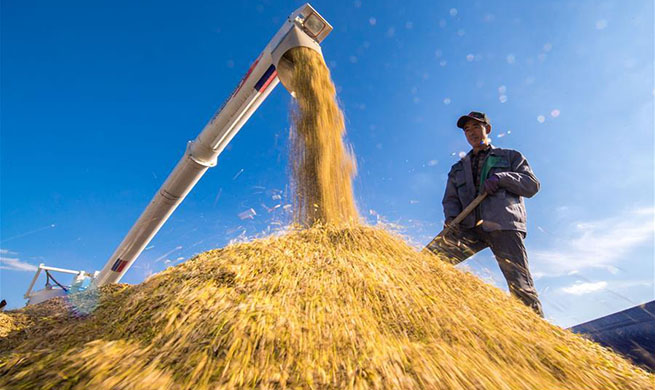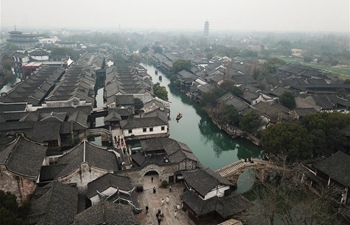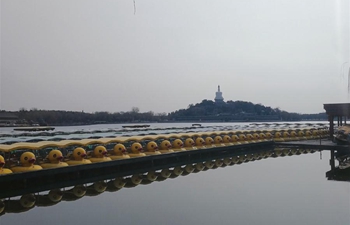WASHINGTON, Feb. 27 (Xinhua) -- Chinese and Swiss scientists have unraveled the secret why a catalyst they discovered could split water into hydrogen and oxygen to be used as a clean fuel.
The study published on Tuesday in the latest edition of ACS Central Science showed that the water-splitting catalyst had a "bifunctional mechanism" thanks to a cooperative action of two phase-separated components of iron and nickle oxides.
Song Fang at China's Shanghai Jiaotong University and Hu Xile's lab at Ecole Polytechnique Federale De Lausanne (EPFL) in Switzerland discovered the nickle-iron oxide catalyst three years ago, which is robust, easy to synthesize and open to industrial applications.
But since then, they hadn't have a clue why the catalyst would be so active to render the oxygen evolution reaction, arguably the most difficult process in water splitting.
In the new study, the researchers found that a cooperative action of two phase-separated components of iron and nickel oxides could overcome a previously identified limitation of conventional metal oxides where the reaction occurred locally on only a single metal site.
They also revealed a unique structure of the catalyst. It is made of nanoclusters of two covalently linked chemical constructions, making it a water-splitting catalyst.
Identifying ideal materials that can split water is a long-standing problem in renewable energy storage.
Because hydrogen is a clean fuel, researchers in the world are putting a lot of effort in developing water-splitting catalysts, which are essential for the reaction's energy efficiency.
The catalyst they discovered proved to enable an efficient electrolyzer that could work under industrial conditions while requiring 200 mV less voltage, according to the study.
Now, utilizing water as fuel cell has yet been realized industrially, but scientists are working hard to find a way make the sci-fi scenario into reality.

















